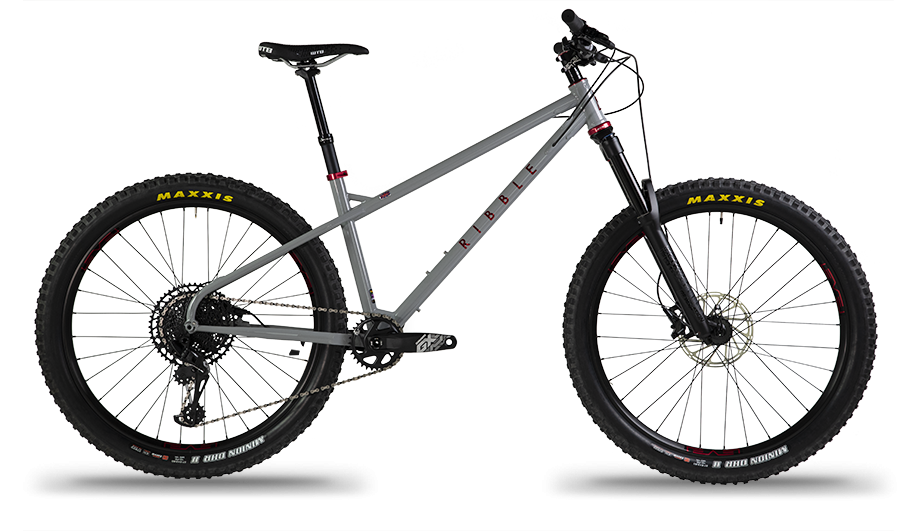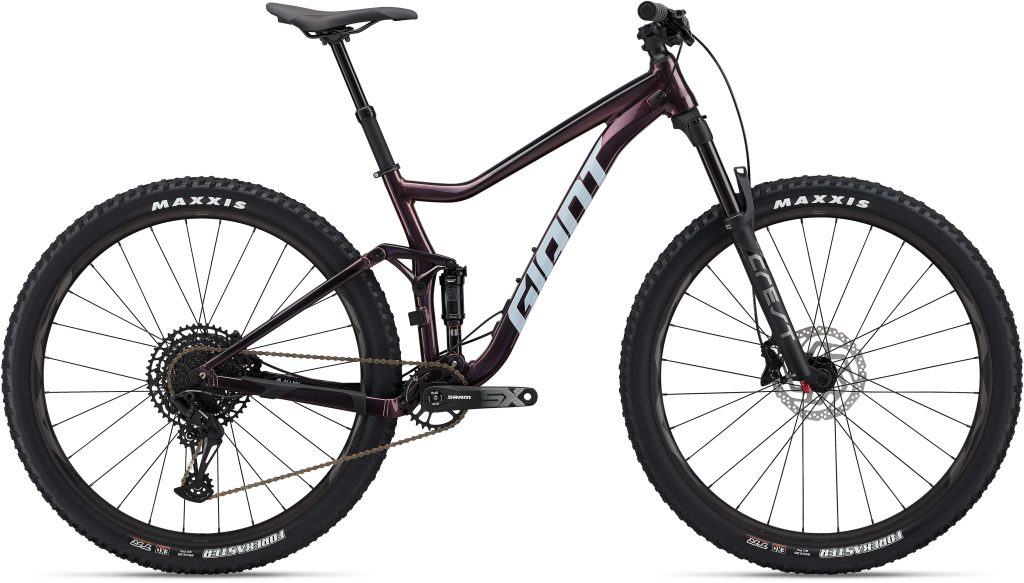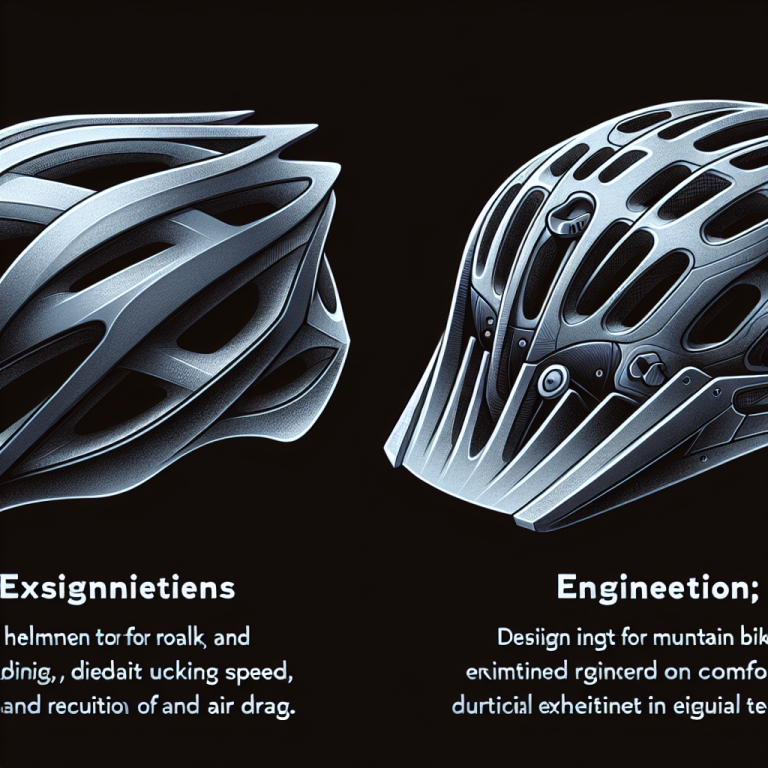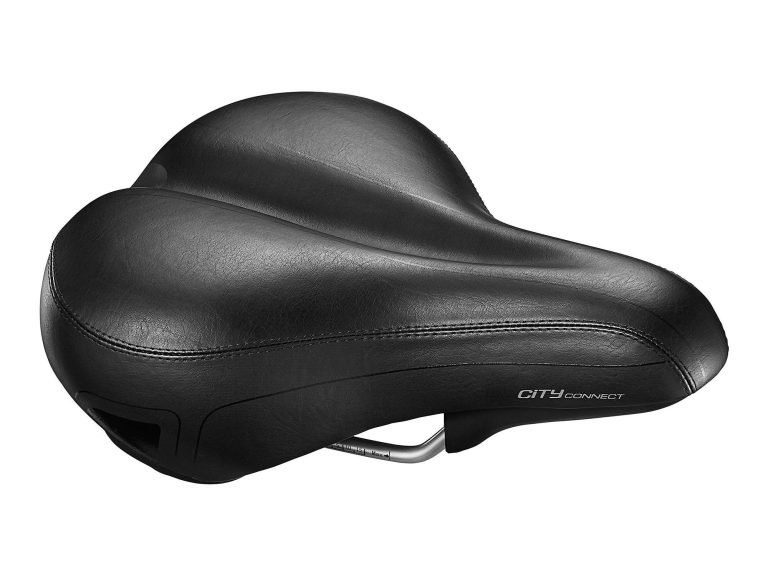Mountain biking is an exhilarating sport that allows you to explore the great outdoors on two wheels, conquering challenging terrains and satisfying your adrenaline cravings. But have you ever considered the importance of the bike frame when it comes to this thrilling activity? Different types of bike frames can significantly impact your mountain biking experience, offering various levels of stability, agility, and speed. In this article, we will explore the different types of bike frames available for mountain biking, helping you understand which one suits your needs and preferences best. So, gear up and get ready to discover the perfect frame for your next off-road adventure!
Table of Contents
ToggleHardtail Bike Frames
Definition
A hardtail bike frame is a type of mountain bike frame that features a suspension fork at the front, but no rear suspension. It is called “hardtail” because it has a rigid rear end, giving the bike a firm and stable feel. This frame design is popular among riders who value simplicity, efficiency, and the ability to tackle various terrains.
Benefits
One of the main benefits of a hardtail bike frame is the increased efficiency in climbing and pedaling. The absence of rear suspension means that more power from your pedal strokes is transferred directly to the rear wheel, allowing you to accelerate and maintain speed more effectively. This makes hardtail bikes a great choice for cross-country riding and those who enjoy the challenge of climbing steep inclines.
Another advantage of hardtail bike frames is their lower weight compared to full suspension options. Without the additional components and linkages needed for rear suspension, hardtail bikes are generally lighter, leading to improved maneuverability and quicker acceleration.
Features
Hardtail bike frames typically have a number of features that enhance their performance and durability. One important feature is the geometry of the frame, which affects how the bike handles and feels. Hardtail frames often have a more aggressive and responsive geometry, with a steeper head tube angle and shorter chainstays, allowing for better control and nimble handling.
Another common feature on hardtail bike frames is the option for internal cable routing. This feature allows for a cleaner and more streamlined appearance, while also protecting the cables from dirt and debris, which can prolong their lifespan and improve overall performance.
Other notable features may include a tapered head tube for increased stiffness, boost spacing for improved wheel and tire clearance, and the ability to accommodate different wheel sizes, such as 27.5-inch or 29-inch options, depending on rider preferences and terrain.
Full Suspension Bike Frames
Definition
Full suspension bike frames, also known as dual suspension frames, have both front and rear suspension systems. These frames are designed to absorb impacts and provide a smooth and controlled ride over rough and technical terrain. The rear suspension allows the rear wheel to move independently from the front, providing improved traction, comfort, and handling.
Benefits
The main benefit of full suspension bike frames is their ability to soak up bumps and obstacles on the trail, offering a smoother and more comfortable ride. The front and rear suspension work together to absorb impacts, reducing the impact on your body and improving overall control.
Full suspension frames also offer improved traction on climbs and descents. The rear suspension allows the rear wheel to stay in contact with the ground better, even on rough and uneven terrain, providing increased grip and traction. This can be particularly advantageous when riding over roots, rocks, and technical sections.
Additionally, full suspension bikes excel in downhill and aggressive trail riding. The rear suspension helps the bike maintain traction and control at high speeds, allowing riders to tackle steep descents and jumps with confidence.
Components
When it comes to full suspension bike frames, there are several components that play a crucial role in their functionality. These include the suspension fork, rear shock, and pivot points.
The suspension fork is responsible for absorbing impacts at the front of the bike. It consists of a set of telescopic legs with a damping system that helps to control the movement and rebound of the fork. High-quality suspension forks often offer adjustable settings, such as compression and rebound damping, allowing riders to fine-tune the performance to suit their preferences and riding conditions.
The rear shock is a critical component of the rear suspension system. It absorbs impacts at the rear of the bike and connects the rear triangle of the frame to the main frame. Similar to the suspension fork, rear shocks can have various adjustments and settings to optimize performance.
Pivot points, located at the junctions of the front and rear triangles, are another important component of full suspension frames. These pivot points allow the two triangles to move independently, enabling the rear wheel to travel vertically and absorb impacts without affecting the front end of the bike.
Rigid Bike Frames
Definition
A rigid bike frame, as the name suggests, is a mountain bike frame without any suspension. It is a simple and straightforward design that prioritizes efficiency and low maintenance. Rigid frames rely solely on the tires and geometry of the frame to provide comfort and control on the trail.
Advantages
One of the main advantages of rigid bike frames is their simplicity and low maintenance requirements. Without any suspension components, there are fewer parts that can wear out or require regular servicing. As a result, rigid frames are often favored by riders who prefer a hassle-free riding experience and are looking to minimize maintenance costs.
Rigid frames also offer a direct and responsive feel on the trail. The rigid rear end provides a direct connection between the rider and the ground, allowing for precise handling and efficient power transfer. This makes rigid frames a popular choice for riders who enjoy technical and precise riding, such as bikepacking or trials riding.
Disadvantages
While rigid bike frames can be a great choice for certain riding styles, they do have some disadvantages compared to frames with suspension. The main drawback is the lack of suspension, which means that the rider has to rely solely on the tires and frame geometry to absorb impacts and vibrations.
Without suspension, rides on rough and rocky terrains can become uncomfortable and fatiguing, as the bike is unable to absorb the shocks and bumps as effectively. This can be particularly noticeable during long rides or on trails with extensive rough sections.
Additionally, the lack of suspension can also impact traction, especially on technical climbs and descents. Suspension helps to maintain contact between the tires and the ground, improving grip and control. Without suspension, the tires may lose traction more easily, particularly in challenging trail conditions.
Aluminum Bike Frames
Characteristics
Aluminum bike frames are known for their lightweight yet sturdy nature. Aluminum is a lightweight metal that has excellent strength-to-weight ratio, making it a popular choice for mountain bike frames. It provides a responsive and lively ride while being durable and relatively affordable compared to other frame materials.
Strengths
One of the main strengths of aluminum bike frames is their lightweight nature. Aluminum is lighter than many other materials commonly used for bike frames, such as steel or titanium. This lightness contributes to improved acceleration and maneuverability, allowing riders to easily navigate tight corners and technical sections.
Aluminum frames are also known for their stiffness, which provides efficient power transfer from the rider to the bike. This stiffness can enhance the bike’s overall responsiveness and make it more agile on the trails. It is particularly beneficial for riders who enjoy explosive bursts of speed or aggressive riding styles.
Considerations
While aluminum frames offer numerous advantages, there are a few considerations to keep in mind. First, aluminum is not as forgiving over rough terrain as some other frame materials, such as carbon fiber or steel. The lack of natural dampening properties means that riders may feel more vibrations and impacts from the trail, which can be fatiguing over long rides.
Another consideration is that aluminum frames may not be as durable as some other materials, such as steel or titanium. While aluminum frames are generally strong and can withstand normal trail riding, they may be more prone to denting or bending under excessive force or impacts.
Lastly, some riders may find aluminum frames to be slightly harsher on the ride compared to frames made from other materials. The stiffness of aluminum can transmit more vibrations and trail feedback to the rider, which may be less comfortable for some individuals, particularly on extended rides.
Carbon Fiber Bike Frames
Advantages
Carbon fiber bike frames have gained popularity in recent years due to their numerous advantages. One of the main advantages is their exceptional strength-to-weight ratio. Carbon fiber is an extremely lightweight material while still being incredibly strong. This allows manufacturers to create bike frames that are incredibly light, yet still durable and capable of handling the demands of mountain biking.
The lightweight nature of carbon fiber frames provides several benefits on the trail. It improves acceleration and climbing efficiency, allowing riders to accelerate quickly and tackle steep inclines with ease. The reduced weight also contributes to improved maneuverability and agility, making it easier to navigate tight corners and technical sections.
Lightweight
Another advantage of carbon fiber frames is their ability to dampen vibrations and absorb shocks from the terrain. Carbon fiber possesses natural vibration-damping properties, resulting in a smoother and more comfortable ride. This can be particularly advantageous on long rides or when riding over rough and rocky terrains, as it reduces the fatigue and stress placed on the rider’s body.
Durability
Contrary to popular belief, carbon fiber frames are not as fragile as they may appear. When manufactured and cared for properly, carbon fiber frames can withstand the rigors of mountain biking and offer exceptional durability. Carbon fiber is a very strong material and is designed to resist impacts and forces experienced during off-road riding. However, it is important to note that excessive impacts or crashes can potentially cause damage to the frame, so proper maintenance and care are essential.
Steel Bike Frames
Properties
Steel bike frames have a long history in the mountain biking world and are known for their durability and classic ride feel. Steel is a strong and malleable material that provides a smooth and comfortable ride due to its natural damping properties. Steel frames often have a unique aesthetic appeal, with their slender tubes and timeless look.
Ride Quality
One of the standout features of steel bike frames is their exceptional ride quality. Steel naturally absorbs vibrations and road chatter, providing a comfortable and compliant ride. This can be particularly beneficial for riders who prioritize comfort and prefer a smoother experience on the trails.
The compliance of steel frames contributes to improved traction and control, as the frame is better able to conform to the trail surface. This can be advantageous when navigating technical sections or when riding over rough and uneven terrain, as it helps to keep the tires in contact with the ground and maintain traction.
Maintenance
Steel frames are known for their durability and longevity. They have a reputation for being able to withstand significant abuse and rough riding conditions. Additionally, steel frames are relatively easy to repair if they sustain damage, as they can be welded or brazed.
However, it is important to note that steel frames can be susceptible to rust if not properly cared for. Regular cleaning and maintenance, including applying protective coatings or treatments, can help prevent rust and extend the lifespan of the frame.
Titanium Bike Frames
Features
Titanium bike frames are highly regarded in the mountain biking community for their unique blend of strength, durability, and lightweight characteristics. Titanium is a lightweight and corrosion-resistant metal that offers a high strength-to-weight ratio, making it an excellent material for bike frames.
Strength-to-Weight Ratio
One of the standout features of titanium frames is their exceptional strength-to-weight ratio. Titanium is incredibly strong, allowing manufacturers to create frames that are lightweight while still being able to withstand the demands of aggressive mountain biking. This strength-to-weight ratio contributes to improved acceleration, climbing efficiency, and overall performance on the trails.
In addition to its strength, titanium is also highly resistant to corrosion, making it a suitable choice for riders in wet or humid environments. Unlike steel, titanium frames do not require special coatings or treatments to prevent rust, further adding to their longevity and low maintenance requirements.
Cost
One consideration when it comes to titanium frames is the cost. Titanium is a premium material, which means that bikes featuring titanium frames tend to have a higher price tag compared to frames made from other materials. However, it is important to note that titanium frames are often considered a long-term investment, as they offer exceptional durability and longevity.
For riders who prioritize the unique ride characteristics and longevity of titanium frames, the higher upfront cost can be justified by the long-term benefits and enjoyment they provide on the trails.
Chromoly Bike Frames
Definition
Chromoly, short for chromium-molybdenum, is a type of steel alloy often used in mountain bike frames. Chromoly bike frames are known for their combination of strength, durability, and flexibility, making them a popular choice among riders who seek a balance between comfort and performance.
Strength
One of the main strengths of chromoly frames is their strength. The addition of chromium and molybdenum to the alloy increases the frame’s strength and resistance to impacts and forces. Chromoly frames can withstand significant abuse and rough riding conditions, making them suitable for aggressive trail riding and downhill riding.
Flexibility
An advantage of chromoly frames is their natural ability to flex or “give” slightly when subjected to impacts. This flex helps to absorb shocks and vibrations from the trail, providing a more comfortable and forgiving riding experience. The slight flexibility of chromoly frames can also enhance traction and control, as the frame is better able to conform to the terrain and maintain tire contact with the ground.
Chromoly frames offer a unique ride feel that combines the strength and durability of steel with the added comfort and compliance provided by the flexible nature of chromoly. This combination makes them a popular choice for riders who value a smooth and forgiving ride while still requiring a durable frame that can handle the demands of aggressive mountain biking.
Hybrid Bike Frames
Definition
Hybrid bike frames are designed to combine the features and characteristics of both mountain bikes and road bikes. They are versatile frames that cater to riders who enjoy a mix of on-road and off-road riding and want a bike that can handle various terrains and riding styles.
Versatility
One of the main advantages of hybrid bike frames is their versatility. The design of hybrid frames allows them to excel on different types of terrain, making them suitable for commuting, fitness riding, and light off-road adventures. They typically have a more upright riding position compared to mountain bikes, providing a comfortable and relaxed riding experience.
Hybrid frames often feature wider tires compared to road bikes, offering improved traction and stability on loose surfaces. This makes them ideal for riders who enjoy occasional off-road excursions or want to explore gravel paths and dirt trails.
Components
Hybrid bike frames are typically equipped with a mix of components from both mountain bikes and road bikes. They often feature flat handlebars for a more upright riding position and better control. Additionally, hybrid frames may have mounting points for racks and fenders, allowing riders to easily attach accessories for commuting or carrying gear.
The drivetrain on hybrid frames is often geared towards efficiency and versatility. They may have a wide range of gears, allowing riders to tackle various terrains and gradients with ease. Additionally, hybrid bikes may come with disc brakes, providing consistent and reliable stopping power in different weather conditions.
Factors to Consider When Choosing a Mountain Bike Frame
Riding Style
When choosing a mountain bike frame, it is important to consider your riding style. Different frame designs and materials are better suited for specific types of riding. If you enjoy aggressive downhill riding and hitting jumps, a full suspension frame with strong components may be the best choice. On the other hand, if you prefer long-distance cross-country rides and climbing steep inclines, a lightweight hardtail frame may be more suitable.
Terrain
The type of terrain you plan to ride on is another important factor to consider when choosing a mountain bike frame. If you primarily ride on smooth trails or dirt roads, a rigid or hardtail frame may be sufficient. However, if you frequently encounter rough and technical terrain, a full suspension frame can provide the necessary comfort and traction to handle the challenges.
Budget
Lastly, your budget will play a significant role in determining the type of mountain bike frame you can afford. Different frame materials and designs come with varying price tags, so it is important to set a budget and prioritize the features that are most important to you. While it may be tempting to opt for the highest-end frame, it is essential to find a balance between performance and affordability.
In conclusion, choosing the right mountain bike frame involves considering factors such as the riding style, terrain, and budget. Hardtail frames offer efficiency and simplicity, full suspension frames excel in rough and technical terrain, rigid frames prioritize low maintenance, while hybrid frames offer versatility. Each frame material, whether it be aluminum, carbon fiber, steel, titanium, or chromoly, has its own set of characteristics, strengths, and considerations. By carefully evaluating your personal preferences and needs, you can find the perfect mountain bike frame that enhances your riding experience and maximizes your enjoyment on the trails.








